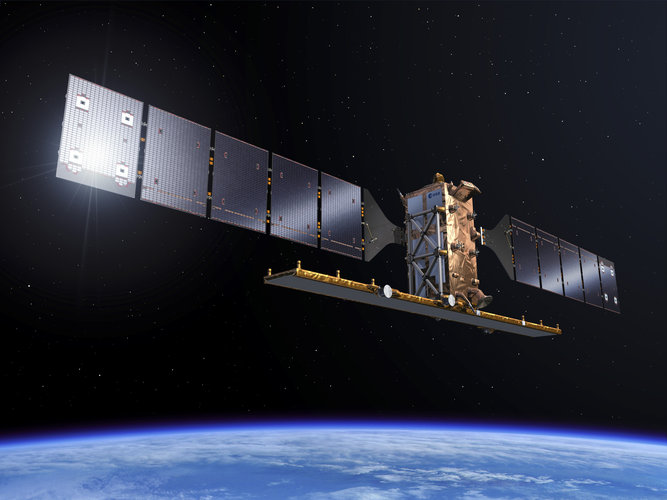Journalists wishing to participate to the launch media programme, detailed below, are asked to submit their application via ESA’s media accreditation page by Friday 25 October 2024 at the latest.
ESA and its partners are planning a wide range of media activities ahead of, and for, the launch of Sentinel-1C on Vega-C,flight VV25, scheduled for 3 December 2024, including online pre-launch media briefings.
This call for interest only relates to those activities taking place at Europe’s Spaceport in French Guiana, to ensure that media accreditation is completed in time for the visits, and to establish a reserve list for the programmes in the event of cancellations.
Programme
Planned dates (TBC): 2-5 December 2024
This three-day programme will allow journalists to conduct interviews with the teams responsible for the launch (including those working on launcher, the launchpad, operations and mission) and VIP guests the day of the launch and the following day.
It will also take into consideration a potential launch delay of up to one day.
Journalists will be able to report live from Kourou. The launch of Sentinel-1C is scheduled for 3 December at 18:20 local time (21:20GMT, /22:20 CET).
Spokespersons and experts from ESA and its partners including the European Commission, Thales Alenia Space, Arianespace and Avio, will be available on site for interviews during the media programmes.
Please note that b-roll material and a clean feed of the launch will be available to media.
ESA will also offer interview opportunities in English, Italian, French, German and Spanish in the weeks leading up to launch. Journalists will also be invited to join online media briefings in these languages approximately 10 days before the launch.
Media accreditation for all these opportunities will open later this year.
Registration
Please express your interest in attending the launch media programmes in French Guiana by Friday 25 October at 12:00 CEST by selecting and completing the relevant form at https://blogs.esa.int/forms/esa-media-briefing-form. Please make sure you mention in the comments section which programme you would like to attend.
Please note:
- ESA will recommend flight dates and accommodation options to confirmed participants to facilitate the trip;
- because the number of places is very limited, ESA cannot guarantee all interested media will be able to join this visit. For this reason, the Agency will also establish a reserve list for the event in case of cancellations.
- accreditation formalities to access the Europe’s Spaceport will have to be completed immediately after confirmation of participation;
- yellow fever vaccination is compulsory to enter French Guiana (this will be checked at the airport).
About Copernicus Sentinel-1
Carrying advanced radar technology to provide an all-weather, day-and-night supply of imagery of Earth’s surface, the ambitious Copernicus Sentinel-1 mission has raised the bar for spaceborne radar.
The mission benefits numerous Copernicus services and applications such as those that relate to Arctic sea-ice monitoring, iceberg tracking, routine sea-ice mapping, glacier-velocity monitoring, surveillance of the marine environment including oil-spill monitoring and ship detection for maritime security as well as illegal fisheries monitoring.
It is also used for monitoring ground deformation resulting from subsidence, earthquakes and volcanoes, mapping for forest, water and soil management, and mapping to support humanitarian aid and crisis situations.
Copernicus the Sentinel-1 mission is the result of close collaboration between ESA, the European Commission, industry, service providers and data users.
The Copernicus component of the EU Space Programme is supported by a set of dedicated missions, known as the Copernicus Sentinels,contributing missions, which include commercial satellites from EU Member States and in-situ (non-space) data.
While the European Union is at the helm of Copernicus, ESA develops, builds and launches the dedicated Sentinel satellites. ESA also operates some the missions and ensures the availability of data.
Designed and built by a consortium of around 60 companies led by Thales Alenia Space and Airbus Defence and Space, the Sentinel-1 mission is an outstanding example of Europe’s technological excellence.
Copernicus Sentinel-1C is the third Sentinel-1 satellite to be launched.
About Vega-C
Europe’s Vega-C rocket can launch 2300 kg into space, such as small scientific and Earth observation spacecraft. At 35 m tall, Vega-C weighs 210 tonnes on the launch pad and reaches orbit with three solid-propellant-powered stages before the fourth liquid-propellant stage takes over for precise placement of satellitesinto their desired orbit around Earth. Vega-C is the evolution of the Vega family of rockets and delivers increased performance, greater payload volume and improved competitiveness.
Complementing the Ariane family to launch all types of payloads into their desired orbits, Vega-C ensures that Europe has versatile and independent access to space. ESA owns the Vega-C programme, working with Avio as prime contractor and design authority. Arianespace will serve as the launch service provider for the launch of Sentinel-1C.
This launch marks Vega-C’s return to flight, a key step in restoring Europe’s independent access to space. The first commercial flight in December 2022 failed due to a nozzle issue in its Zefiro-40 motor. Since then, an improved nozzle design has undergone two successful firing tests, in May and October 2024, which demonstrated the motor's ability to perform reliably under different pressure conditions and burn durations. These tests have confirmed the motor's readiness, clearing the path for Vega-C’s upcoming flight.



